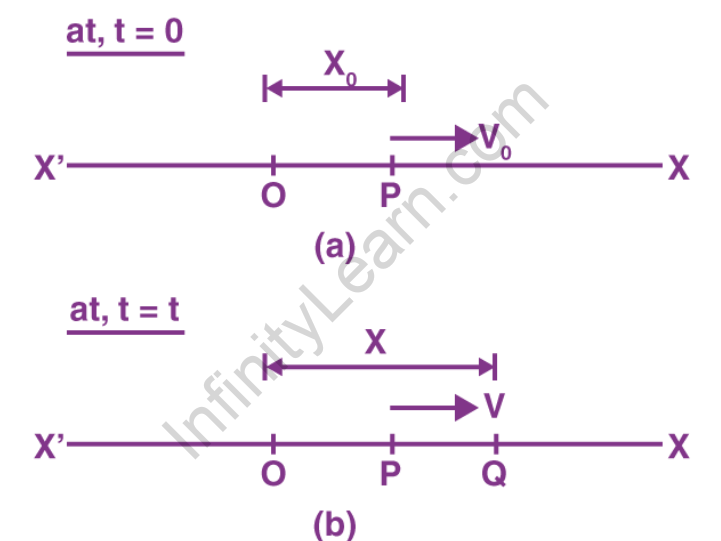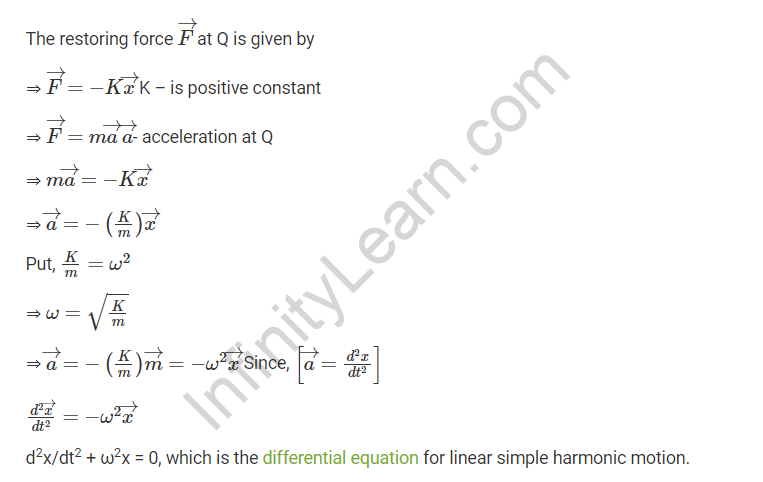Table of Contents
Simple harmonic motion (abbreviated SHM) is a type of periodic motion in mechanics and physics in which the restoring force on the moving object is directly proportional to the magnitude. It acts in the direction of the object’s equilibrium position, regardless of its displacement. It generates an oscillation that can remain indefinitely if not interrupted by friction or other sources of energy dissipation. The oscillation of a mass on a spring, when exposed to Hooke’s law’s linear elastic restoring force, can be utilised as a mathematical model for a wide range of motions. The motion is sinusoidal in time and has only one resonant frequency.
Simple harmonic motion can be used to simulate other phenomena, such as the motion of a simple pendulum; however, for it to be an accurate model, the net force on the object at the end of the pendulum must be proportionate to the displacement (and even so, it is only a good approximation when the angle of the swing is small; see small-angle approximation). Simple harmonic motion can be used to simulate molecular vibration. Simple harmonic motion serves as a foundation for the characterization of more complicated periodic motion using Fourier analysis techniques. Simple harmonic motion is defined as any motion in which a restoring force that is proportional to the displacement and in the opposite direction of the displacement is applied. Or, to put it another way, the more you pull it one way, the more it wants to return to the centre. A mass on a spring is a classic example of this, because the more the mass stretches it, the more it feels a tug back towards the centre. A mass on a spring can be vertical, as in gravity, or horizontal, as in a smooth tabletop.
Overview
SHM, or Simple Harmonic Motion, is defined as a motion in which the restoring force is directly proportional to the body’s displacement from its mean position. This restoring force is always directed in the direction of the mean position. The acceleration of a particle moving in a simple harmonic motion is given by a(t) = -ω2 x(t). Here, is the particle’s angular velocity.
The simple harmonic motion refers to the movement of an object around a mean position along a straight line. It swings back and forth about its centre of gravity, where the string and bob move. These pendulum movements are known as oscillations, and they exhibit simple harmonic motion. Simple harmonic motion is an oscillatory motion in which the acceleration of a particle at any point is proportional to its displacement from the mean position. It exemplifies oscillatory motion. SHM are all oscillatory and periodic motions, but not all oscillatory motions are SHM. . The harmonic motion of all oscillatory motions, the most important of which is simple harmonic motion, is also referred to as oscillatory motion (SHM). In this type of oscillatory motion, displacement, velocity, acceleration, and force vary (with respect to time) in a way that can be described by either the sine (or) cosine functions, which are referred to as sinusoids collectively.
The vibration of a mass attached to a vertical spring, the other end of which is fixed in a ceiling, is an example of a simple harmonic oscillator. The spring is at its most tension at maximum displacement x, which forces the mass upward. The spring reaches its greatest compression at maximum displacement +x, forcing the mass back downward. The force is greatest and is directed toward the equilibrium position at either maximum displacement position, the mass’s velocity (v) is zero, its acceleration is maximum, and the mass changes direction. At the equilibrium position, the velocity is at its maximum and the acceleration (a) is zero.
Simple harmonic motion is distinguished by this varying acceleration, which is always directed toward the equilibrium position and is proportional to the displacement from the equilibrium position. Furthermore, the time interval between complete vibrations is constant and unaffected by the maximum displacement size.

Types of Simple Harmonic Motion
SHM, or Simple Harmonic Motion, is divided into two types:
- SHM that is linear
- SHM that is angular
Simple Linear Harmonic Motion
Linear Simple Harmonic Motion occurs when a particle moves back and forth along a straight line around a fixed point (called the equilibrium position).
Conditions for Linear SHM:
The restoring force or acceleration acting on the particle must always be proportional to the particle’s displacement and directed towards the equilibrium position.
Angular Simple Harmonic Motion
When a system oscillates angularly long with respect to a fixed axis, it exhibits angular simple harmonic motion.
Simple Harmonic Motion Equation
Consider a particle of mass ‘m’ moving along the path x O x with Simple Harmonic Motion. Let the particle’s mean position be O. Let the particle’s speed be ‘v0’ when it is at position p (a distance x0 from the mean position O).
The particle is at point P at t = 0. (moving towards the right direction).
The particle is at point Q at t = t. (at a distance x from O). With a ‘v’ velocity.


The following are the solutions to the simple harmonic motion differential equation:
x = Asinωt It is the particle’s solution when it is in its mean position point ‘O’ in figure (a).
x₀ = Asinϕ It is the particle’s solution when it is in any other position but not the mean position in figure (b).
x = Asin(ωt+ϕ) By changing the value of x in the differential equation, these solutions can be easily verified.
Application of Simple Harmonic Motion
A clock’s time is kept by a pendulum or a vibrating quartz crystal. To ensure accurate timekeeping, the pendulum or quartz must move on a regular basis.
Springs attached to car wheels are required for a smooth ride for passengers. The car’s wheels rose as it passed over a bump in the road.
If there are no shock absorbers in the car, the entire vehicle will be thrown up and down, making the passengers uncomfortable.
Also read: Acceleration due to Gravity and its Variation with Altitude and Depth
FAQs
Q. What are some illustrations of simple harmonic motion?
Ans: We know that physics is natural science because we’ve been studying it. We use the term “natural science” to refer to the fact that we can see and observe this phenomenon all around us. Simple harmonic motion is defined as any object that moves in a straight line along its mean axis. The humble pendulum, a mass-spring system, a steel ball rolling in a curved dish, and the familiar motion of the swing that we used to enjoy as children are some well-known examples.
Q. What is the difference between Periodic Motion and Oscillation Motion?
Ans: Period motion is rhythmic in the sense that it repeats itself at regular intervals. The uniform circular motion is an example of this. Oscillation motion is defined as the periodic movement of an object along a straight line without deviating from the mean axis. Simple harmonic motion is a subtype of oscillatory motion in which the object oscillates between two extreme points in a straight line.





